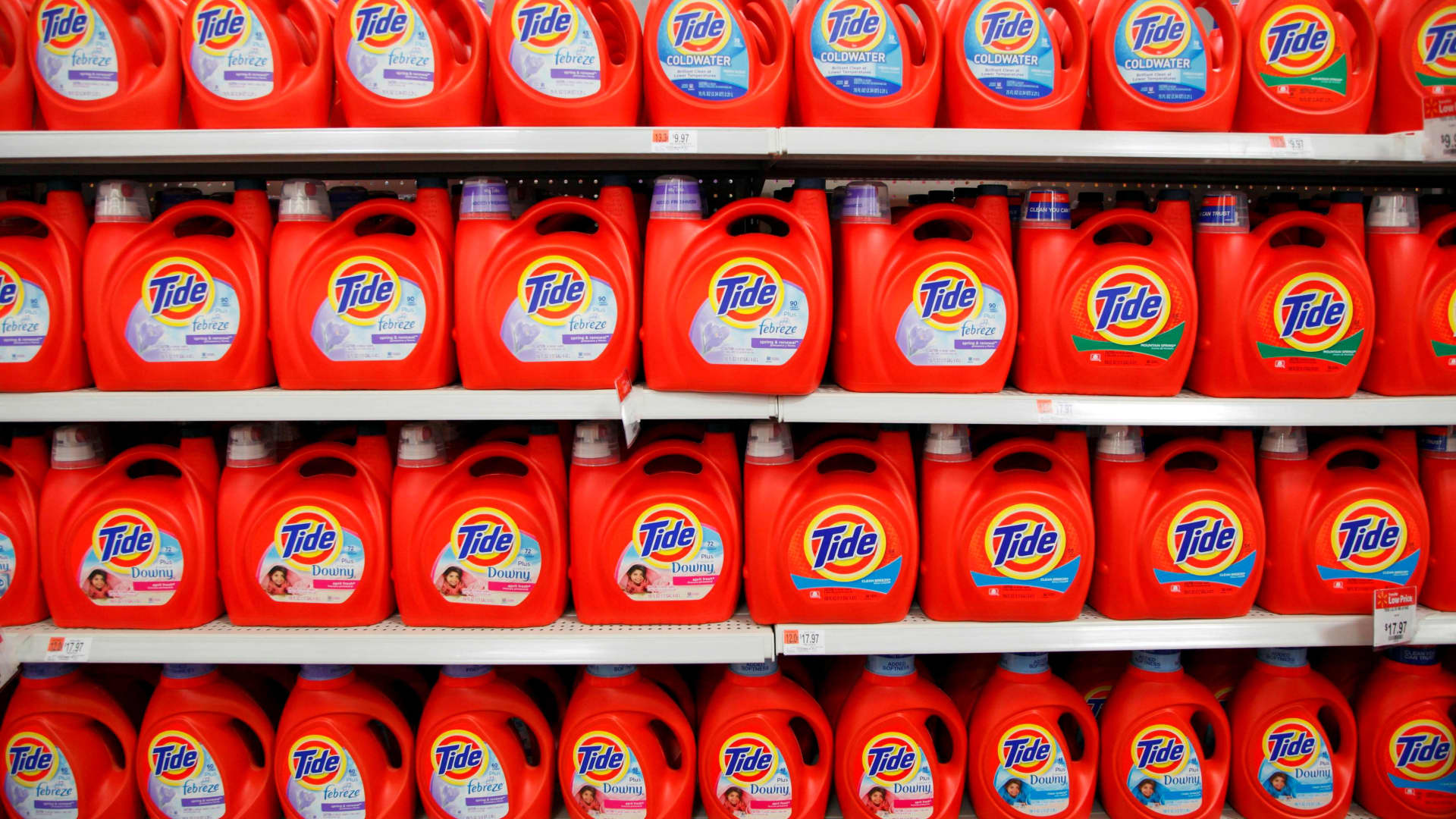A Best Buy store stands outside of a Brooklyn mall on August 29, 2023 in New York City.
Spencer Platt | Getty Images
Best Buy missed Wall Street’s quarterly sales expectations on Thursday as softer demand for consumer electronics persisted.
The retailer beat on earnings per share, though, and stuck by its full-year forecast. It expects revenue will range from $41.3 billion to $42.6 billion for the full year. That would mark a drop from the most recently ended fiscal year, when full-year revenue totaled $43.45 billion. It said comparable sales will range from flat to a 3% decline.
Here’s how Best Buy did in its fiscal first quarter compared with what Wall Street was anticipating, based on a survey of analysts by LSEG:
- Earnings per share: $1.20 adjusted vs. $1.08 expected
- Revenue: $8.85 billion vs. $8.96 billion expected
The company’s net income for the three-month period that ended May 4 rose slightly to $246 million, or $1.13 per share, from $244 million, or $1.11 per share, a year earlier. Adjusting for one-time items, including restructuring charges, Best Buy reported earnings of $1.20 per share.
Net sales dropped to $8.85 billion from $9.47 billion in the year-ago period.
Best Buy’s sales have been sluggish, as the company deals with the aftermath of roughly two years of outsized demand during the Covid pandemic. The retailer has been in the middle of a waiting game for the replacement cycle of laptops, kitchen appliances and more to normalize and for the debut of new tech gadgets to push customers to its stores and website.
Plus, like other retailers, Best Buy has noticed a pullback in purchases of discretionary items as consumers manage higher costs because of inflation.
Comparable sales, a metric that includes sales online and at stores open at least 14 months, declined 6.1% compared with the year-ago period, as customers bought fewer appliances, home theaters, gaming devices and mobile phones. On the other hand, the company said it saw growth in its services and laptop categories.
As sales lag, Best Buy has focused on boosting profits instead. It’s looked to newer businesses, including its subscription-based membership program. It relaunched My Best Buy as a three-tier program in late June. The lowest tier of the program is free, but the top tier costs $179.99 per year for perks like round-the-clock tech support, up to two years of product protection and 20% off repairs, among other benefits.
In a news release on Thursday, CEO Corie Barry said the company continues “to manage our profitability while at the same time preparing for future growth.” But, she acknowledged “a challenging sales environment” for the consumer electronics category and softer-than-expected sales.
The Minneapolis-based retailer has also slashed spending. Earlier this year, Barry said the company would lay off workers and cut costs across the business. She did not specify the number of layoffs, but said Best Buy would invest in areas that could drive growth, like artificial intelligence.
As of early February, Best Buy had more than 85,000 employees. That’s down from the nearly 125,000 workers that it had in early 2020 and the more than 90,000 employees it had in early 2023, according to company financial filings.
The company also said in late February that it would close 10 to 15 stores in the fiscal year, after shutting 24 stores in the previous one.
Best Buy on Thursday adjusted its full-year capital expenditures forecast to an estimate of $750 million, down from as much as $800 million.
Shares of Best Buy closed on Wednesday at $71.90, bringing the company’s market value to about $15 billion. As of Wednesday’s close, the company’s stock is down about 8% year-to-date, trailing behind the S&P 500’s gains of about 10%.
This is breaking news. Please check back for updates.















